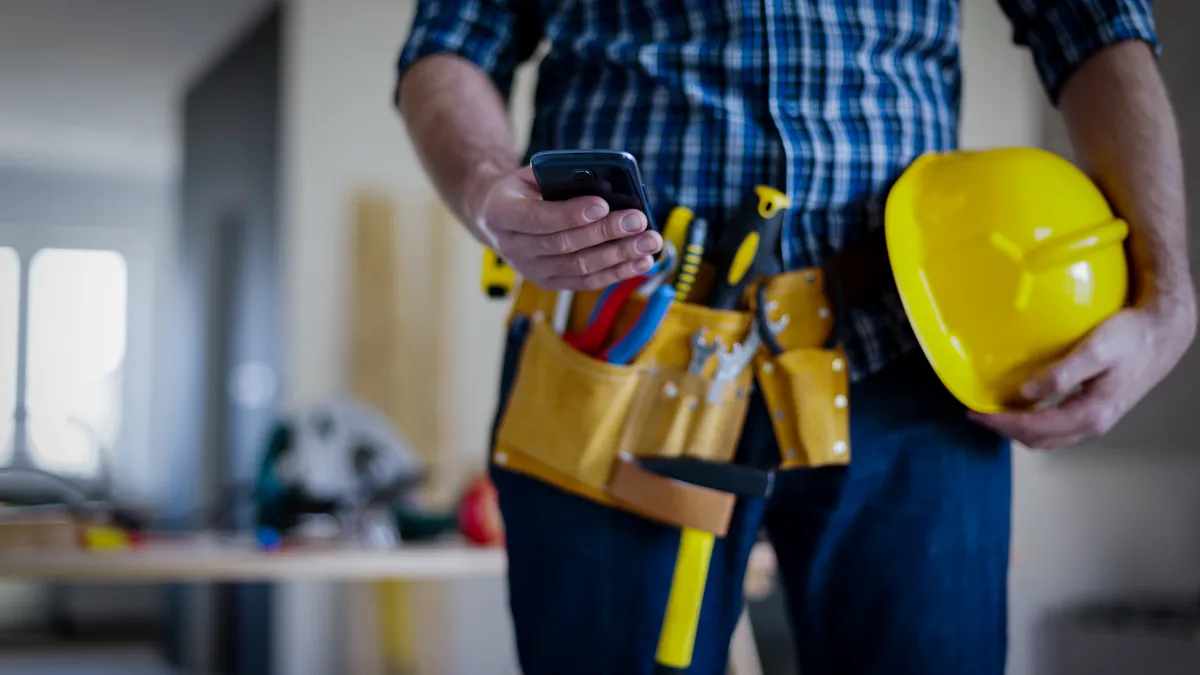DENVER—Every safety professional knows the scene: Workers huddle at the start of their day and listen to a foreman running down the list of hazards they should be aware of. It’s dry content, and they may have heard a similar spiel for the last few days.
This pre-task planning (PTP) and job hazard analysis (JHA) process is critically important for keeping workers safe, said two presenters at the Associated General Contractors Convention last week, but the way that it’s typically carried out is simply not engaging workers enough to avoid injuries and incidents throughout the day.
Before:
“Our position is there is a much more productive and less expensive way to spend the first 15 minutes of every day,” said Barry Nelson, CEO and founder of FactorLab, an industrial internet of things firm. It starts with a technology that practically every safety leader on the jobsite will have access to: a smartphone.
Foremen should move away from the one-sided conversation of reading down a piece of paper, he suggested. Instead, by taking a short video on their phone of a more interactive question-answer session, they can capture a daily opportunity to get field workers “switched on” and paying attention, according to Nelson.
After:
Dan Saddler, vice president of safety for Structure Tone Southwest, said safety leaders’ questions should make sure that workers understand the worst-case scenario for the day’s scope of work and how it can be avoided altogether.
The presenters showed “before” videos of workers whose body language indicated disinterest and a lack of attention. “After” videos, in contrast, featured responsive workers that were articulating the various ways they could protect themselves from a range of risks that day.
Seeing measurable results
It’s worth noting that the foremen cared just as much about their teams' safety both before and after, noted Nelson, but in the more interactive iteration, they became aware of their ability to “help transform these conversations” around safety, and by extension, the culture of the jobsite.
Plus, the foremen could trace their actions to positive, measurable results, he added, which is something that safety professionals, who juggle a host of issues and responsibilities at any given time, can have difficulty doing.
After implementing the video workflow, Structure Tone was able to reduce its accidents and injuries by more than 28% despite expanding its man hours by about 30%, said Saddler. And it wasn’t the videos that did the trick, both speakers noted; rather, it was the engagement and changes in behavior that naturally followed.
Workers who are expected to respond to prompts are naturally more attentive and alert, so not only is the video practice more effective, according to Nelson, but it reduces the process from 15 minutes to 5 minutes. That means that more of the man hours employers pay for are going toward completion of work, not just discussion of how it will be carried out.
For executives, the videos serve as “a main line directly into the heart of the culture of your organization on a daily basis,” said Nelson. “It’s coming literally from the mouths of your crew leaders every day of what they think is the most important thing they’re supposed to be saying to those closest to the work.”
Using data to competitive advantage
There are few better opportunities to gain visibility into the priorities, strengths and weaknesses of leaders across the company’s jobsites, Nelson said. “Enormous competitive advantage” can result from this field-level insight, he suggested, because leaders can begin to solve problems that they couldn’t see before. Competitors, meanwhile, may be unable to address such issues on their construction sites.
It’s unrealistic that executives and safety leaders can review most videos posted each day, said Saddler. But certain technologies can pore through all the data to save time and organize it in a way that brings value to these decision-makers.
Nelson built a machine that scraped all content from 4,000 videos and categorized words by four topics: hazards, planning, caring and engagement. Examples of caring words are “good morning” and “thank you,” he explained, and hazards would include references to falls or personal protective equipment, among other keywords.
Most organizations are aware of the safety professionals who have higher rates of accidents and injuries than others, he said, and this tool allows contractors to consider how conversations differ between the two groups. While the use cases and queries will vary between companies, one sample set found that the more words that were used in safety conversation, the more caring words were expressed. Such findings could help guide the suggestions that executives make to foremen or safety directors, for example, to improve safety across the company.
And in the future, Nelson suggested, technology could even allow for “predicting construction and safety outcomes based on the conversations that your people are having."



















